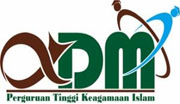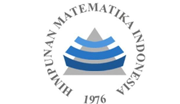Optimal Control Application in Mathematical Model of Indonesian Coffee Export Tax
Abstract
Keywords
Full Text:
PDFReferences
REFERENCES
Elisha, L. C. (2015). Analisis ekspor kopi indonesia ke Amerika Serikat dengan pendekatan Error Correction Model. Economics Development Analysis Journal, 4(4), 367-375.
Izzah, S. N. (2020). Peran Asosiasi Eksportir Dan Industri Kopi Indonesia (Aeki) Dalam Meningkatkan Standar Mutu Dan Daya Saing Ekspor Kopi Indonesia Di Pasar Eropa. Jurnal Online Mahasiswa (JOM) Bidang Ilmu Sosial dan Ilmu Politik, 7(2), 1-15.
Cen, C. C., and Faisal, E. N. (2021). Permintaan Kopi Indoensia: Studi Terhadap Dua Negara Tujuan Utama Ekspor. Jurnal Riset Ilmu Ekonomi, I(3), 108-119.
Sugiharti, R. R., Panjawa, J. L., and Hasti, A. D. (2021). Dinamika Variabel Moneter terhadap Ekspor di Indonesia: Pendekatan VECM. in UMMagelang Conference Series (pp.59-81).
Putra, I. M., and Aliasuddin, A. (2021). Ekspor Kopi dan Karet di Indonesia. Jurnal Ilmiah Mahasiswa Ekonomi Pembangunan, 6(3), 183-194.
Sitanini, A., Sutanto, A., and Wijayanti, I. K. E. (2020). Faktor–Faktor Yang Mempengaruhi Volume Ekspor Kopi Indonesia Ke Jepang. JSEP (Journal of Social and Agricultural Economics), 13 (3), 253.
Rosiana, N. (2019). Dayasaing dan ekspor kopi Indonesia melalui pendekatan sistem dinamis (Doctoral dissertation), IPB (Bogor Agricultural University), Bogor.
Harum, S. (2022). Analisis Produksi Kopi Di Indonesia Tahun 2015-2020 Menggunakan Metode Cobb-Douglass. Jurnal Ilmiah Ekonomi Pembangunan, 1(2), 102-109.
Badan Pusat Statitik. (2022). Outlook Statistik Kopi Indonesia. BPS Indonesia.
Nurlianti and Selfiani, S. (2021). Dampak Perekonomian terhadap Alih Fungsi Lahan Tanaman Kopi ke Tanaman Tomat dalam Peningkatan Kesejahteraan Masyarakat di Desa Potokullin. Ad-Dariyah: Jurnal Dialektika, Sosial dan Budaya, 2(1), 11-24.
Wahyudi, A., Wulandari, S., Aunillah, A., & Alouw, J. C. (2020). Sustainability certification as a pillar to promote Indonesian coffee competitiveness. In IOP Conference Series: Earth and Environmental Science (Vol. 418, No. 1, p. 012009). IOP Publishing.
Wati, E. (2020). Produksi Dan Permintaan Kopi Indonesia Di Pasar Internasional: Model Persamaan Simultan (Doctoral dissertation). Universitas Islam Riau, Riau.
Syakir, M., & Surmaini, E. (2017). Perubahan iklim dalam konteks sistem produksi dan pengembangan kopi di Indonesia. Jurnal Penelitian Dan Pengembangan Pertanian, 36(2), 77-90.
Aristy, Y., and Rachman, M. E. (2023). Analisis Faktor-faktor yang Mempengaruhi Permintaan Kopi Indonesia. EKONOMIKA45: Jurnal Ilmiah Manajemen, Ekonomi Bisnis, Kewirausahaan, 11(1), 384-392.
Anggraeni, O. J. (2013). Peramalan Harga dan Permintaan Komoditas Tembakau di Kabupaten Jember. Jurnal Ilmiah Inovasi, 13(1).
Syahrini, I., et al. (2021). The application of optimal control through fiscal policy on Indonesian economy. The Journal of Asian Finance, Economics and Business, 8(3), 741-750.
Blueschke, D., Blueschke-Nikolaeva, V., & Neck, R. (2014). Stochastic control of econometric models for Slovenia. In System Modeling and Optimization: 26th IFIP TC 7 Conference, CSMO 2013, Klagenfurt, Austria, September 9-13, 2013, Revised Selected Papers 26 (pp. 21-30). Springer Berlin Heidelberg.
Zhao, J., Gan, M., & Chen, G. (2020). Optimal control of discrete-time switched linear systems. Journal of the Franklin Institute, 357(9), 5340-5358.
Rahmalia, D., & Rohmatullah, A. (2019). Analisis kestabilan dan kontrol optimal model penyebaran penyakit zika dari gejala dengue menggunakan forward backward sweep method. Jurnal Ilmiah Soulmath: Jurnal Edukasi Pendidikan Matematika, 7(2), 159-173.
DOI: http://dx.doi.org/10.30829/zero.v9i1.24344
Refbacks
- There are currently no refbacks.

This work is licensed under a Creative Commons Attribution-ShareAlike 4.0 International License.
Publisher : Department of Mathematics Faculty of Science and Technology Universitas Islam Negeri Sumatera Utara Medan | |
✉️ Email: zero_journal@uinsu.ac.id 📱 WhatsApp:085270009767 (Admin Official) | |
 |  |  |  |  |



